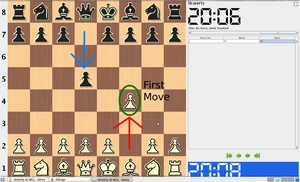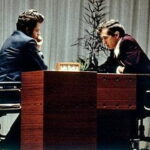Bird’s opening is named after Henry Bird, who popularized the line in the 1850s. It is fast becoming a favorite choice of blitz and tournament players alike, because to this day there is only scarce information and theory about the chess opening.
The Bird’s chess opening starts with 1. f4. For those not familiar with algebraic chess notation, that means to move the king’s bishop pawn up two squares (as shown in the article image). Thrusting that pawn forward as the first move can throw the player with the black pieces off their game quickly, especially if they are used to the stock 1. e4 or 1. d4 game starters (king or queen pawn up two squares).
The idea for the early f4 thrust is really two-fold: it takes immediate control of the crucial e5 square in the center, and it creates a semi-open file for the rook after the king castles, written as 0-0 (for castles king-side; castling queen-side is written 0-0-0). Later in the game, the white player is much closer to pushing the f-pawn to f5 should he or she need to, in order to break open black’s position.
The normal “book” reply (a book reply means that the move has been officially accepted as a documented theoretical reply) for black is 1… d5 (or moving the pawn in front of the queen up two squares). That move prevents white from moving an immediate pawn to e4, claiming more of the center. White then develops the knight to f3, which further controls the e5 square.
White has many options in the Bird’s chess opening. One opportunity is to play the g pawn up one to g3 and develop the bishop to g2, taking control of the long diagonal. Another option is to play e3, which prevents black from playing pawn to e4 and simultaneously prepares the e2 square for the bishop.
The idea in most games is to play for an eventual pawn to e4, breaking up the center and taking control of black’s king-side squares. The coolest thing about the Bird’s chess opening is that there is very little theory, or book, on the subject. You are pretty much free to invent as you go.
One possible variation, known as the “Polar Bear” chess opening, was invented by the very strong Grandmaster Henrik Danielsen. The chess opening involves an early king-side pawn attack, which can easily cripple the black player if he or she does not play very exactly. He has published many free videos on the opening, and they can be found at www.videochess.net or Youtube (the entire series can be found here: http://www.youtube.com/results?search_query=polar+bear+chess&search;_type=&aq;=f).




